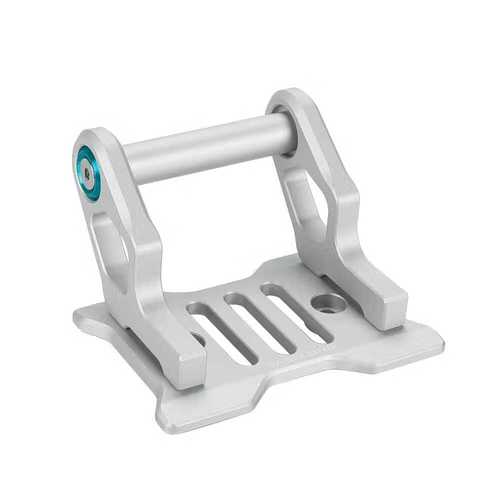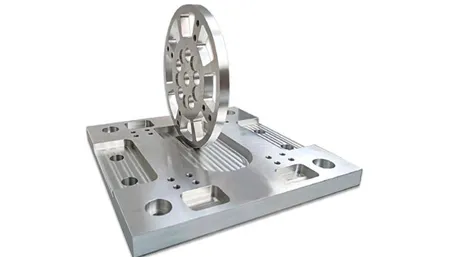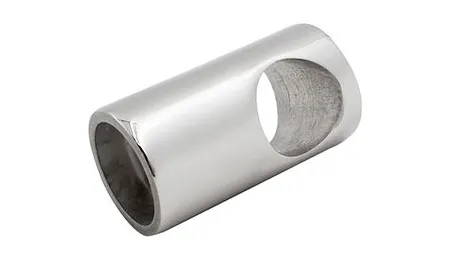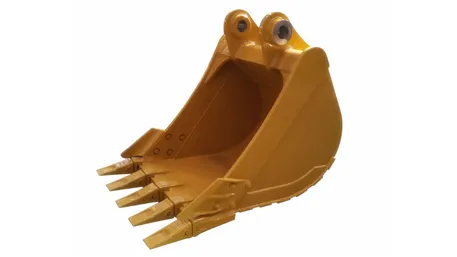Custom CNC aluminum alloy brackets aren’t just ordinary “supports”—they’re engineered solutions that blend strength, precision, and adaptability to hold, align, or secure your equipment perfectly. Whether you need to stabilize heavy industrial machinery, mount delicate electronic devices, or craft sleek display stands for retail products, these brackets solve critical pain points: ensuring zero misalignment for sensitive gear, withstanding constant weight without bending, and fitting seamlessly into your existing setup (no awkward modifications needed).

Crafted via computer-controlled CNC machining, they turn raw aluminum alloy into tailored supports—think ultra-tight 0.01mm tolerances for equipment mounting holes, corrosion-resistant surfaces for outdoor use, and ergonomic or space-saving designs for compact spaces. Every cut, slot, and finish is built around your specific needs, making these brackets as reliable as they are versatile.
1. Materials: Choosing the Right Aluminum Alloy for Your Bracket
Aluminum alloys vary in strength, weight, and resistance—picking the right one depends on your bracket’s job: how much weight it needs to hold, where it will be used (indoor vs. outdoor), and how complex its shape is. Here are the top options, tailored to real-world support needs:
-
6061-T6 Aluminum Alloy: The most versatile choice for most custom brackets. It balances easy machining (perfect for cutting intricate slots, mounting holes, or curved edges), solid load-bearing capacity (handles up to 120MPa of stress—great for electronic device mounts or light industrial supports), and affordability. It also takes surface treatments (like anodization) well, making it ideal for desktop monitor brackets, small machinery supports, or retail display stands. Its moderate corrosion resistance works for indoor or sheltered outdoor setups.
-
7075-T6 Aluminum Alloy: The “high-strength workhorse” for heavy-duty brackets. With a tensile strength of up to 570MPa (nearly 5x that of 6061), it’s built for supporting heavy gear—think industrial machine arms, large server racks, or heavy-duty vehicle mounts. While it’s slightly trickier to machine than 6061, its exceptional fatigue resistance means it won’t weaken over time, even under constant weight. It’s the go-to for brackets that can’t afford to bend or fail.
-
5052-H32 Aluminum Alloy: The top pick for corrosion-prone environments. It resists saltwater, humidity, and chemicals far better than other alloys, making it perfect for outdoor brackets—like solar panel mounts, outdoor security camera supports, or marine equipment brackets. It’s also lightweight (lighter than 6061) and flexible enough to form gentle curves (great for curved display stands), while still holding up to moderate weights (up to 90MPa).
-
6082-T6 Aluminum Alloy: The “balanced strength” choice for medium-duty brackets. Stronger than 6061 but more machinable than 7075, it’s ideal for brackets that need a little extra heft without sacrificing design flexibility—like furniture supports (e.g., table legs or shelf brackets), medium-sized industrial equipment mounts, or exhibition booth structures. It’s also cost-effective for bulk orders, making it a favorite for commercial projects.
2. Techniques: Crafting Precision Brackets With CNC & Beyond
Custom CNC aluminum alloy brackets rely on two core steps: ultra-precise CNC machining (to get the shape and holes right) and targeted surface treatments (to boost durability and fit your space). Here’s how we bring your bracket design to life:
CNC Machining Techniques (The “Shape & Fit” Step)
-
3-Axis CNC Milling: For simple to moderately complex brackets—like flat shelf supports, basic monitor mounts, or straight equipment brackets. It cuts along three axes (X, Y, Z) to create clean holes, straight edges, and simple slots—fast, cost-effective, and perfect for small-batch orders or brackets with straightforward designs (e.g., a rectangular wall mount with four mounting holes).
-
5-Axis CNC Milling: For complex, multi-angle brackets—like curved solar panel mounts, angled machinery supports, or brackets with off-center holes. It adds two rotational axes, letting the machine reach every surface without repositioning the aluminum—critical for brackets that need to fit into tight or irregular spaces (e.g., a bracket that mounts a sensor to a curved machine frame). This technique hits tolerances as tight as 0.005mm, ensuring holes align perfectly with your equipment.
-
CNC Drilling & Tapping: A must for brackets (which rely on precise holes to mount or secure gear). We use CNC drilling to create perfectly sized holes (from 1mm to 20mm+) and CNC tapping to add internal threads (e.g., M4, M6) for screws—no loose fits or stripped threads. For brackets that need to adjust (e.g., height-adjustable display stands), we add threaded slots or countersunk holes for smooth, secure adjustments.
Surface Treatment Techniques (The “Durability & Style” Step)
-
Anodization: The most popular finish for brackets. It creates a thin, hard oxide layer that resists scratches, rust, and wear—ideal for high-touch brackets (like monitor mounts) or those exposed to mild moisture (e.g., bathroom shelf brackets). It comes in colors from matte black to silver, and can be matched to your brand or space (e.g., black anodized brackets for a sleek office setup).
-
Sandblasting: Creates a soft, non-slip matte texture—great for brackets that need grip (e.g., hand-held equipment supports) or to hide minor scratches (perfect for industrial brackets used in busy workshops). It’s often paired with anodization for a “industrial-chic” look that works in both factories and modern retail spaces.
-
Powder Coating: Adds a thick, tough layer for heavy-duty protection. It’s ideal for outdoor brackets (resists UV rays and rain) or industrial brackets exposed to oil, dust, or chemicals (e.g., factory machine supports). It’s available in textured or glossy finishes, and can match almost any Pantone color—great for branding retail display brackets.
-
Passivation: A chemical treatment that boosts corrosion resistance (even more than anodization) for outdoor or marine brackets. It’s invisible (leaves the aluminum’s natural color) and creates a protective layer that prevents rust in saltwater or humid environments—critical for solar panel mounts or boat equipment brackets.
3. The Custom CNC Aluminum Alloy Bracket Production Process
Creating a custom bracket means aligning every step with how it will be used—no guesswork, just reliable support. Here’s our step-by-step journey:
-
Support Needs & Spec Analysis: First, we ask: What will the bracket hold? (A 5kg monitor? A 500kg machine?) How will it be mounted? (Wall, ceiling, or equipment frame?) Where will it live? (Indoor office? Outdoor rooftop?) What tolerances do you need? (e.g., 0.01mm for holes that align with a sensor’s mounting points.) This tells us key details—like needing 7075 alloy for a heavy machine bracket, or 5-axis milling for an angled solar mount.
-
Design & 3D Modeling: Our engineers turn your specs into a detailed 3D model (using CAD software like SolidWorks). We add critical features: reinforced edges for weight-bearing, slotted holes for adjustability, chamfered edges (to avoid sharp corners), and clearance for screws or wiring. We also run “load simulations” to ensure the bracket can hold your equipment without bending—no last-minute failures.
-
Prototype Making & Testing: We create a physical prototype (using CNC machining for final alloy testing) so you can: Check if it mounts perfectly to your equipment; Test its load-bearing capacity—we add weight incrementally to confirm it meets your needs; Verify surface finish (e.g., does the powder coating resist scratches?). We tweak the design until it’s strong and easy to use.
-
Material Selection & Prep: Based on your needs, we pick the aluminum alloy (e.g., 6061 for a monitor bracket, 5052 for an outdoor camera mount) and cut it into “blanks” (raw aluminum pieces) slightly larger than the final bracket—leaving room for machining. We inspect blanks for defects (like dents or cracks) to avoid weak spots.
-
CNC Machining: We load blanks into 3-axis or 5-axis CNC machines (programmed with your 3D model). The machine cuts, drills, taps, and shapes the aluminum—creating mounting holes, support arms, slots, or curves. We monitor in real time to ensure tolerances stay tight (e.g., a 0.008mm gap between the bracket and your equipment).
-
Surface Treatment: After machining, we clean the bracket to remove metal shavings, then apply your chosen finish (anodization, powder coating, passivation). For food-grade or medical brackets (e.g., hospital equipment supports), we add extra sanitization steps to meet compliance standards.
-
Quality Inspection: Every bracket undergoes 4 critical checks:
- Dimensional Accuracy: We use a coordinate measuring machine (CMM) to scan holes, edges, and angles—ensuring they match your 3D model (accuracy up to 0.001mm).
- Load Testing: We mount the bracket and apply its rated weight (plus 20% for safety) to check for bending or warping—only passing brackets that stay strong.
- Mounting Fit: We attach the bracket to a replica of your equipment to confirm holes align and it secures tightly—no wiggling or misalignment.
- Finish Durability: We test surface treatments (scratching for anodization, chemical resistance for powder coating) to ensure they hold up to use.
-
Packaging & Delivery: We package brackets in anti-scratch foam or boxes (to protect finishes) and ship them—with options for bulk packaging (for factory installs) or individual packaging (for retail or prototype use).
4. Key Features of Standout Custom CNC Aluminum Alloy Brackets
Great custom brackets don’t just “hold things”—they make your setup safer, easier, and more reliable. These features set them apart:
-
Ultra-Precise Alignment: 0.005–0.01mm tolerances mean mounting holes line up perfectly with your equipment—no drilling extra holes or forcing screws (which damages gear). Critical for sensitive devices like sensors or medical equipment.
-
Reliable Load-Bearing: Engineered with reinforced edges and the right alloy (e.g., 7075 for heavy loads) to hold weight without bending or breaking—even over years of use. We test every bracket to 120% of its rated load for peace of mind.
-
Lightweight Strength: Aluminum is 1/3 the weight of steel, so brackets add minimal bulk—great for portable equipment (e.g., handheld tool supports) or ceiling mounts (which can’t handle heavy steel brackets).
-
Corrosion Resistance: Surface treatments like passivation or powder coating protect against rust, saltwater, and chemicals—extending life for outdoor or industrial brackets.
-
Custom Adaptability: We design around your space—whether you need a slim bracket for a tight desk gap, an angled bracket for a sloped ceiling, or a modular bracket that adjusts height. No more forcing “one-size-fits-all” brackets to work.
5. Equipment: Tools for Precision & Reliability
Great custom CNC aluminum brackets depend on equipment that delivers accuracy and consistency—batch after batch:
-
5-Axis CNC Milling Centers: Brands like Haas or Fanuc—these machines handle complex bracket shapes (e.g., angled arms, off-center holes) with 0.001mm repeatability, ensuring every bracket in your order is identical. They have auto-tool changers to switch between drills, mills, and taps quickly.
-
CNC Drilling & Tapping Machines: For precise hole-making—these machines drill and tap holes in one step, ensuring threads are straight and perfectly sized (no stripped screws). They’re ideal for brackets with dozens of mounting holes (e.g., server racks).
-
Coordinate Measuring Machines (CMMs): For dimensional checks—laser or touch-probe systems scan every bracket, comparing it to your 3D model to catch even tiny deviations (e.g., a 0.002mm off-center hole).
-
Load Testing Machines: For verifying —these machines apply controlled weight to brackets, measuring bending or stress to ensure they meet safety standards. Critical for heavy-duty industrial brackets.
-
Anodization Tanks & Powder Coating Booths: Temperature-controlled tanks for consistent anodization (no uneven color) and electrostatic powder coating booths (for smooth, durable layers that resist chipping).
6. Production: Balancing Precision, Speed, and Safety
When making custom CNC aluminum brackets, safety (for both the bracket and your equipment) never takes a backseat—but we still meet your deadlines:
-
Material Traceability: Every aluminum blank comes with a certificate of authenticity (CoA), so you know the alloy is exactly what you ordered (e.g., 7075-T6, not a weaker substitute). Critical for industrial or medical brackets where failure risks damage.
-
Batch Consistency: We use custom “fixtures” (clamps) to hold blanks in place during machining—ensuring every bracket is cut from the same position, with no variation. Computerized programs eliminate human error, so the 500th bracket is as precise as the first.
-
Waste Reduction: We optimize blank sizes to minimize scrap, and recycle leftover aluminum (100% recyclable) to lower environmental impact. This keeps costs fair for your order.
-
Fast Turnaround: For prototypes, we offer 3–5 day delivery (CNC-machined in final alloy). For bulk orders (100+ units), we deliver in 2–3 weeks—without skipping load tests or quality checks.
7. Applications: Where Custom CNC Aluminum Alloy Brackets Shine
Custom brackets work for every industry where reliable support matters—here’s how different sectors use them:
-
Industrial Manufacturing: 7075-T6 hard-anodized brackets for machine arms, conveyor supports, or heavy equipment mounts—tough enough to handle vibration and constant weight.
-
Electronics & IT: 6061 anodized brackets for server racks, monitor mounts, or router supports—lightweight, precise, and sleek enough for office spaces.
-
Renewable Energy: 5052 passivated brackets for solar panel mounts (rooftop or ground) or wind turbine sensors—corrosion-resistant to withstand rain, snow, and UV rays.
-
Retail & Display: 6082 powder-coated brackets for product display stands, shelf supports, or signage mounts—custom colors to match brand aesthetics, and strong enough to hold merchandise.
-
Medical & Healthcare: 6061 sanitized brackets for hospital bed accessories, diagnostic equipment mounts, or lab tool supports—easy to clean, precise, and compliant with medical standards (FDA, ISO 13485).
FAQs: Your Custom CNC Aluminum Alloy Bracket Questions Answered
Q1: How do you determine the right alloy for my bracket’s load needs?
We start with your equipment’s weight (plus a 20% safety margin) and use material strength data (e.g., 6061 handles ~120MPa, 7075 ~570MPa) to recommend an alloy. We also run load simulations during design to confirm it’s strong enough.
Q2: Can you make brackets with adjustable height or angle?
Absolutely! We add slotted holes, threaded rods, or hinge-like structures to create adjustable brackets—perfect for display stands (adjustable height) or solar panels (adjustable angle for sunlight).
Q3: What’s the minimum order quantity (MOQ) for custom brackets?
We offer flexible MOQs: 1 unit for prototypes (great for startups testing a setup) and 50 units for bulk production. For high-volume orders (1,000+), we can negotiate lower per-unit costs.
Q4: Will the bracket resist rust in outdoor or humid environments?
Yes—we use corrosion-resistant alloys (5052) and finishes (passivation, powder coating) for outdoor brackets. We also test brackets in humidity chambers to confirm they won’t rust.
Ready to Design Your Custom CNC Aluminum Alloy Bracket?
Whether you need to support heavy industrial gear, mount electronic devices, or craft retail displays—we’ll create a bracket that’s strong, precise, and tailored to your space. Leave a message below with your needs (mounting style, environment, or brand colors), and our team will send you a free 3D design mockup and sample quote. Let’s turn “unreliable supports” into “rock-solid stability”—starting with your custom bracket.






